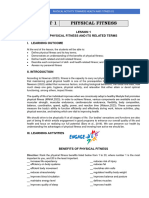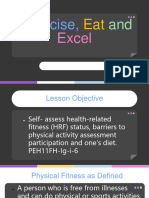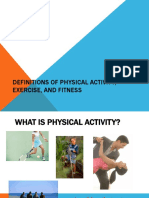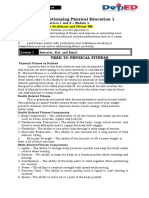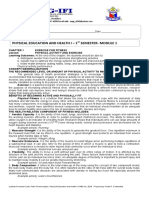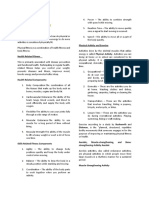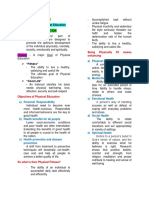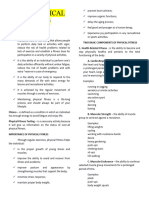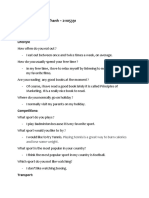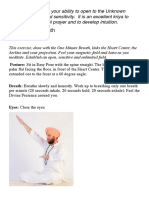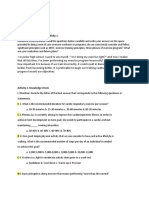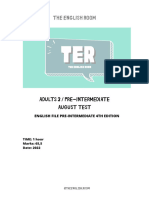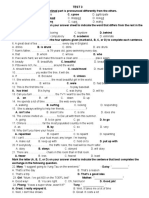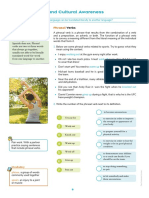100% found this document useful (1 vote)
124 views59 pagesPhysical Fitness & Activity Guide
Physical fitness is characterized as the capacity to do day by day undertakings with power and sharpness without unjustifiable exhaustion. It incorporates both wellbeing related and ability related parts like cardiovascular perseverance, adaptability, and muscle quality. Wellbeing related parts, for example, body composition and cardiovascular perseverance assistance forestall illness while ability related parts like speed, coordination and reaction time are significant for games execution. Regular physical movement can come from work, family duties, transportation, relaxation time exercises or a deliberate exercise routine. Both moderate and fiery power exercises advantage wellbeing however exercises ought to suit one's capacity level. Barriers like absence of time, inspiration or offices can prevent individuals from being dynamic.
Uploaded by
Rolando NABUSCopyright
© © All Rights Reserved
We take content rights seriously. If you suspect this is your content, claim it here.
Available Formats
Download as PPTX, PDF, TXT or read online on Scribd
100% found this document useful (1 vote)
124 views59 pagesPhysical Fitness & Activity Guide
Physical fitness is characterized as the capacity to do day by day undertakings with power and sharpness without unjustifiable exhaustion. It incorporates both wellbeing related and ability related parts like cardiovascular perseverance, adaptability, and muscle quality. Wellbeing related parts, for example, body composition and cardiovascular perseverance assistance forestall illness while ability related parts like speed, coordination and reaction time are significant for games execution. Regular physical movement can come from work, family duties, transportation, relaxation time exercises or a deliberate exercise routine. Both moderate and fiery power exercises advantage wellbeing however exercises ought to suit one's capacity level. Barriers like absence of time, inspiration or offices can prevent individuals from being dynamic.
Uploaded by
Rolando NABUSCopyright
© © All Rights Reserved
We take content rights seriously. If you suspect this is your content, claim it here.
Available Formats
Download as PPTX, PDF, TXT or read online on Scribd
/ 59




